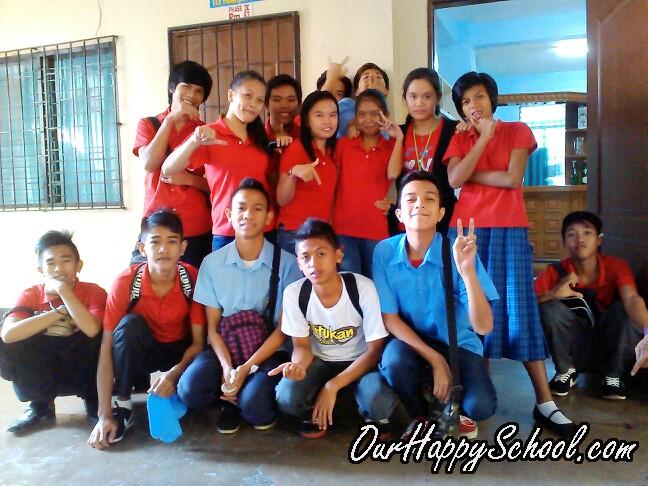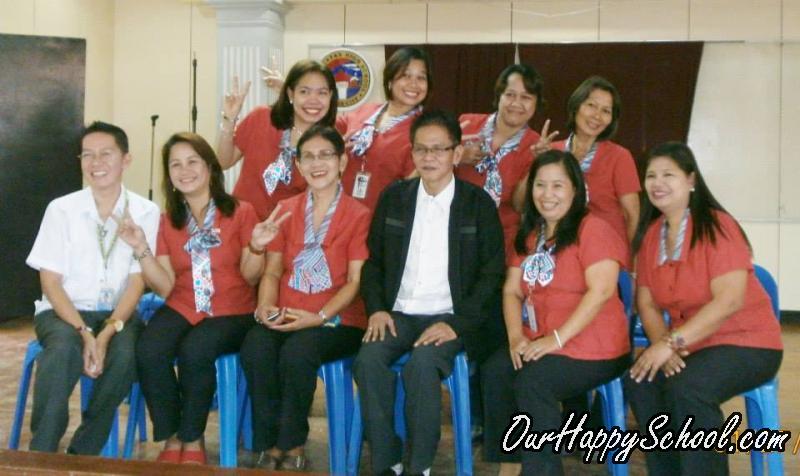Sponsored Links
OPEN HIGH SCHOOL PROGRAM (OHSP): “ Reaching the Unschooled Wherever and Whenever.”
 About 6 million Filipino children of school going age drop out of school altogether. This is the data that has emerged from a study carried out by the Department of Education in Manila. 30% of the 91 million inhabitants of the country are under 18: almost 25% of them never finish their studies. (AsiaNews)
About 6 million Filipino children of school going age drop out of school altogether. This is the data that has emerged from a study carried out by the Department of Education in Manila. 30% of the 91 million inhabitants of the country are under 18: almost 25% of them never finish their studies. (AsiaNews)
Such enormous rate had prompted the government specifically the Department of Education to launch programs that would solution the problem. Blaming poverty as the primary cause of such DepEd, then, focus on the possibility of reaching those unschooled and under schooled youth in their respective localities on the basis that would be convenient for them.
An Open Letter to School Principals, OPEN HIGH SCHOOL Teachers, and Parents
Anchored on the Philosophy of the Batas Pambansa 232 or Education Act of 1982 - “The state shall provide the right of every individual to relevant quality education regardless of sex, age, creed, socio-economic status, physical and mental conditions, racial or ethnic origin, political and others.” the Open High School Program had commenced in 1988.
What is OHSP?
OHSP is an acronym for Open High School Program. It is an alternative mode of formal secondary education program run by the Bureau of Secondary Education (BSE) of the Department of Education (DepEd) of the Republic of the Philippines.
It caters to learners who are unable to attend the regular class program due to physical impairment, personal and family problem, financial difficulty, distance of home to school, early pregnancy, early marriage, work and other justifiable and legitimate reasons.
The program provides an opportunity for elementary school graduates, high school drop-outs and successful examinees of the Philippine Education Placement Test (PEPT) to complete secondary education in a purely distance learning mode. The program provides printed self learning modules for students to use for their lessons and classroom activities.
Who are qualified to enroll under OHSP

Students who wish to avail of OHSP must meet the following qualifications:
- Filipino Citize Independent learner
- Have completed the pre-requisite grade or year level
- Must pass the Independence Learning Readiness Test (ILRT) and the Informal Reading Inventory (IRI)
When can I avail of OHSP?
OHSP is available anytime. It is not dependent on the calendar of the regular school year. Student may start at their own time and at their own pacing, provided they complete their entire high school education within a maximum period of six (6) years.
Where is OHSP offered?
OHSP is available nationwide. All interested parties may contact the DORP Coordinator at the nearest DepEd Regional Office. The DORP Coordinator will direct the applicant to the nearest schools division where EASE is offered.
Applicants may also contact the Curriculum Development Division of the Bureau of Secondary Education, Department of Education (DepEd).
Why offer OHSP?
OHSP is intended for students who would otherwise be unable to pursue formal secondary education due to the rigid requirement of regular class schedules. It is an alternative to attending regular classes but is not designed to be beneficial to all students. Most students may still learn best by attending the regular formal secondary education.
How is the OHSP managed?
The overall management of the OHSP shall be done through the DropOut Reduction Program (DORP) management structure (DORP Handbook, p.21). An OHSP Coordinator shall be designated to oversee all the activities of the intervention. The roles and responsibilities that are specific to the implementation of the OHSP.
Roles and Responsibilities:
School Head
Coordinates with the Local Government Unit (LGU) to ensure the use of community, facilities by the OHSP learners;
Establishes a learning management program to bridge learning gaps and enhance learning;
Designates an OHSP Coordinator to synchronize OHSP activities with other strategic components of DORP;
Oversees the implementation of policies formulated by the DORP Council (for schools with DORP Council) pertinent to the OHSP;
Provides administrative and technical support to the implementers;
Evaluates the performance of the OHSP Coordinator and teacher implementers; and
Submits report to the Division through the Division DORP Council.
School DORP Council
Formulates policies to promote and ensure the successful implementation of the OHSP;
Monitors the implementation of the policies in particular and the intervention in general; and
Resolves OHSP issues that may arise and problems that may be encountered.
OHSP Coordinator
Initiates the designing and implementation of action plans on OHSP to increase participation;
Coordinates with the Guidance Counselor on the conduct of the Independent Learning Readiness Test (ILRT) and the Informal Readiness Inventory (IRI) test;
Leads in the conduct of orientation program for OHSP students and parents;
Provides technical assistance to the teacher implementers;
Oversees proper documentation of OHSP activities; and
Keep the School Head and the School DORP Council properly informed on the progress of the OHSP.
Guidance Counselor
Administers, analyzes and interprets ILRT and IRI test and helps teachers utilize test results;
Helps screen qualified enrollees to the OHSP;
Keeps an updated profile of the OHSP students; and
Tracks the progress of the students through the teacher-implementers.
Teacher-Adviser
Orients learners on their tasks and responsibilities as OHSP students;
Helps learners gain access to learning materials/resources;
Guides the learners in his/her self-directed learning tasks;
Tracks the progress of the learner;
Refers the learner to appropriate subject teacher for assistance when necessary; and
Maintains a complete record of the learner’s performance.
Subject-Teacher

Assists learners in identifying their learning needs; and in preparing their self directed learning plan;
Provides time for consultation to address learning gaps;
Assesses learner’s progress and provide feedback;
Keeps a complete record of the learner’s performance; and
Provides the teacher-adviser with the results of the student’s performance.
Learner/Student
Accomplishes the learner’s profile form;
Identifies his learning needs and prepares his self directed learning plan;
Implements his self learning plan;
Consults with the teacher-adviser, subject teacher or any capable person in the community when necessary;
Assesses his own progress and performance; and
Reports periodically to the teacher-adviser and subject teachers.
In support to the school management, the following DepEd administrative levels and other stakeholders shall have the following responsibilities:
Division Office
Advocates the OHSP within the Division and encourages the participation of private secondary schools;
Provides technical guidance through its Division DORP Council;
Monitors the implementation of the OHSP; and
Conducts researches to improve the program.
Regional Office
Conducts advocacy activities to increase participation rate within the region;
Provides technical assistance to the Division DORP implementers who assist and monitors the OHSP; and
Conducts results monitoring and researches.
Central Office through the Bureau of Secondary Education
Advocates program through print and broadcast media to ensure nationwide participation in the program;
Formulates national policies on OHSP;
Conducts capability building activities for OHSP participation schools; and
Monitors the implementation of the program through the Regional Office.
Local Government Unit (LGU)
Promotes the OHSP program through the conduct of community assemblies, barangay council and sangguniang bayan meetings, linkages with non-government organizations, and print and broadcast media;
Provides a list of out-of-school youth who may participate in the program;
Makes available to the learners community facilities like library, reading centers, museum, gymnasium, etc.;
Identifies potential resource persons in the community who can assist the leaners; and
Provides incentives to learners to increase participation in different community activities.
What are to be evaluated in OHSP? Who shall be involved?
To determine the results of the program, the following shall be evaluated:
1. Performance of the learner / student
2. Performance of the teacher-implementers.
3. Overall implementation of the OHSP (Summative Evaluation).

The Open High School Program (OHSP), therefore, would serve as one of our tools to combat the growing rate of unschooled in the country. If extensively implemented, the youth, whom Jose P. Rizal recognized as the Hope of the Nation, will definitely be realized.
Reference: http://www.bse.ph/indexs .php/ohsp.html
About the Author:
Ma. Victoria M. Cuervo , the contributor, has been a subject teacher in the Drop-Out Reduction Program (DORP) in Pinagbuhatan High School for three years, where she taught Entrepreneurship. Currently she is the Head Teacher of the TLE Department and one of the Coordinators of the Open High School Program (OHSP) in the said school.




